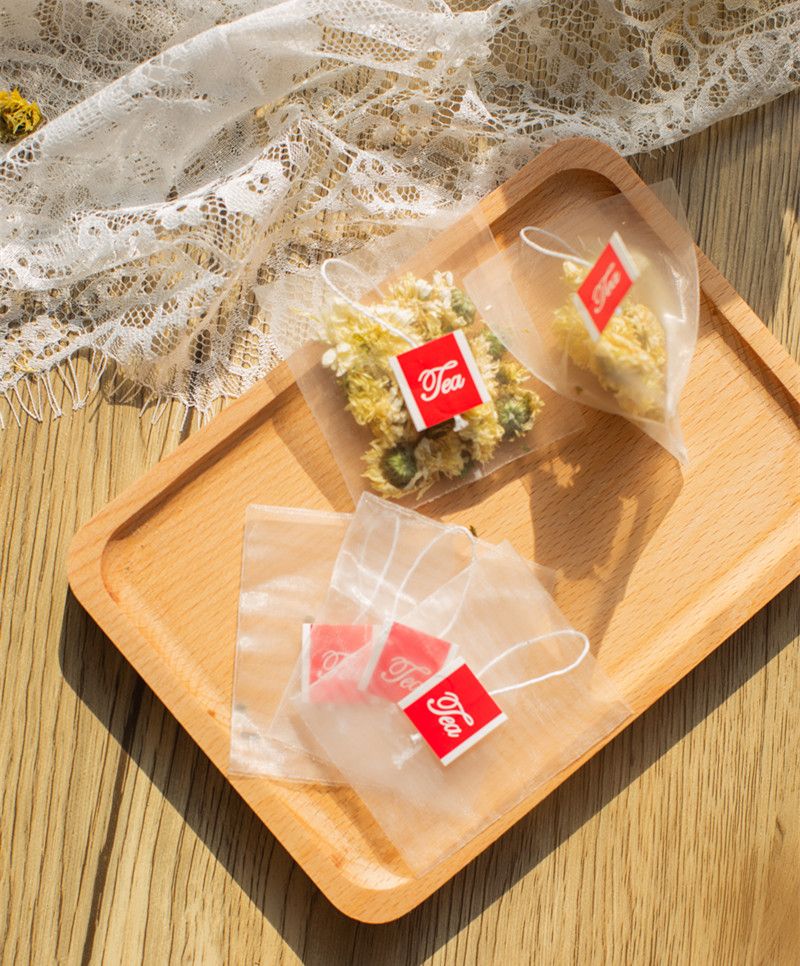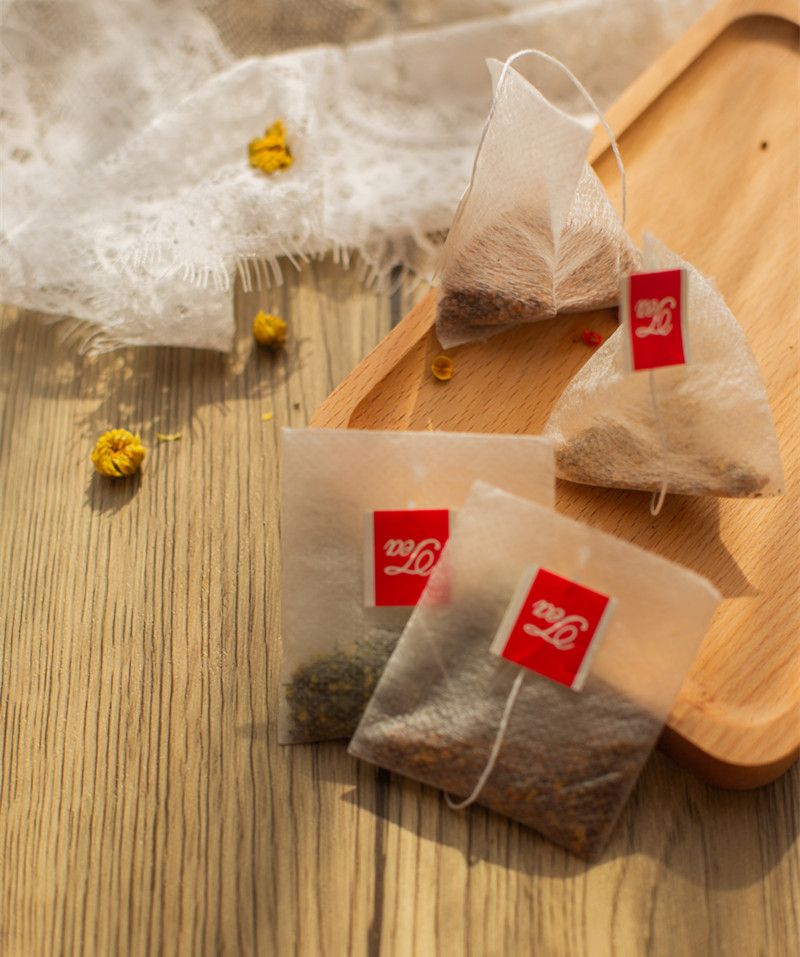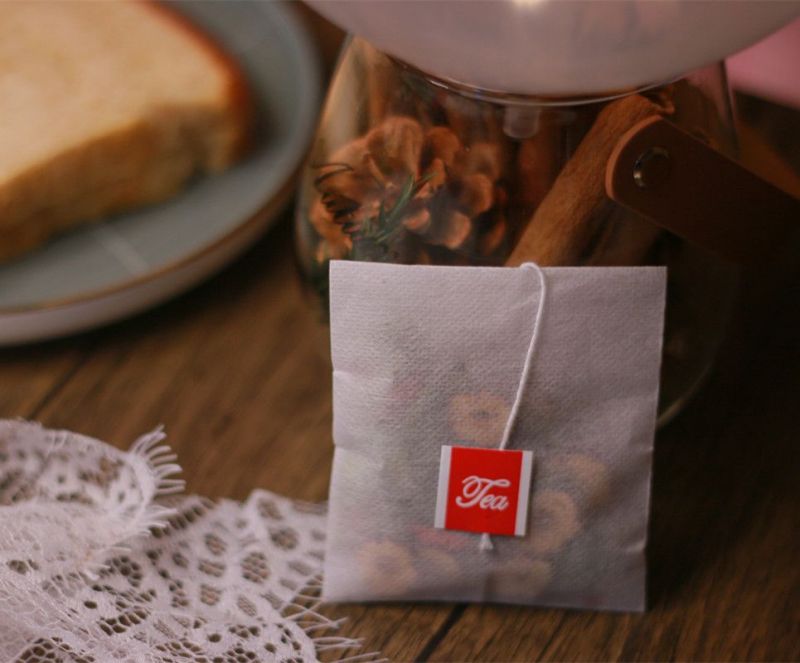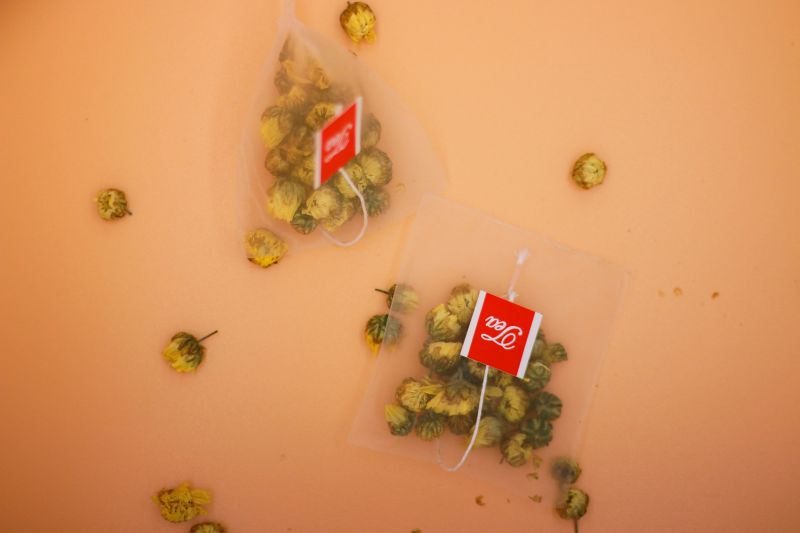The implementation standards for tea bags primarily depend on the specific requirements and preferences of tea manufacturers, but there are some general guidelines and industry standards that are commonly followed in the production of tea bags. These standards ensure consistent quality and safety of the product. Here are some key aspects to consider:
Material Selection
The most common material for tea bags is food-grade filter paper or non-woven fabric,nylon,pla corn fiber mesh. It should be made of natural fibers and should not impart any taste or odor to the tea.
The material should be free from contaminants, chemicals, and substances that could be harmful to health.
Tea Bag Size and Shape:
Tea bags come in various shapes and sizes, but a standard size is usually around 2.5 inches by 2.75 inches (6.35 cm by 7 cm) for a rectangular bag. Pyramid-shaped and round tea bags are also popular.
The size and shape should be suitable for the type of tea being packaged.
Sealing Method:
The tea bag should be securely sealed to prevent the tea leaves from escaping.
Common sealing methods include heat-sealing, ultrasonic sealing, or adhesive sealing. The choice of method depends on the material and design of the tea bag.




Filling Capacity:
The amount of tea leaves in each bag should be consistent to ensure a uniform flavor in the brewed tea.
The filling equipment should be calibrated and maintained regularly to achieve accuracy.
Labeling and Tagging:
Many tea bags have paper labels or tags attached for branding and to provide information about the tea.
The labeling should include details such as tea type, brewing instructions, and any relevant branding information.
Packing and Packaging:
After filling and sealing, the tea bags are usually packed into boxes or other containers for distribution.
Packaging materials should be suitable for food contact and provide protection against moisture, light, and oxygen, which can degrade the tea.
Quality Control:
Quality control measures should be in place throughout the manufacturing process to ensure that the tea bags meet the desired quality standards.
This includes inspections for defects, proper sealing, and consistent filling.
Regulatory Compliance:
Tea bag manufacturers should adhere to relevant food safety and quality regulations in their respective regions.
Compliance with regulations ensures that the product is safe for consumption.
Environmental Considerations:
Many consumers are concerned about the environmental impact of tea bags. Manufacturers may opt for biodegradable or compostable materials to address these concerns.
Consumer Safety and Health:
Ensure that the tea bags are free from contaminants and chemicals that could pose health risks.
Perform regular testing for contaminants such as heavy metals, pesticides, and microbial pathogens.
These are some general standards and considerations for tea bag production. However, specific requirements may vary by brand and market demand. It's essential for manufacturers to establish their own quality control protocols and adhere to applicable regulations while also considering environmental and consumer safety concerns.
Post time: Oct-11-2023

